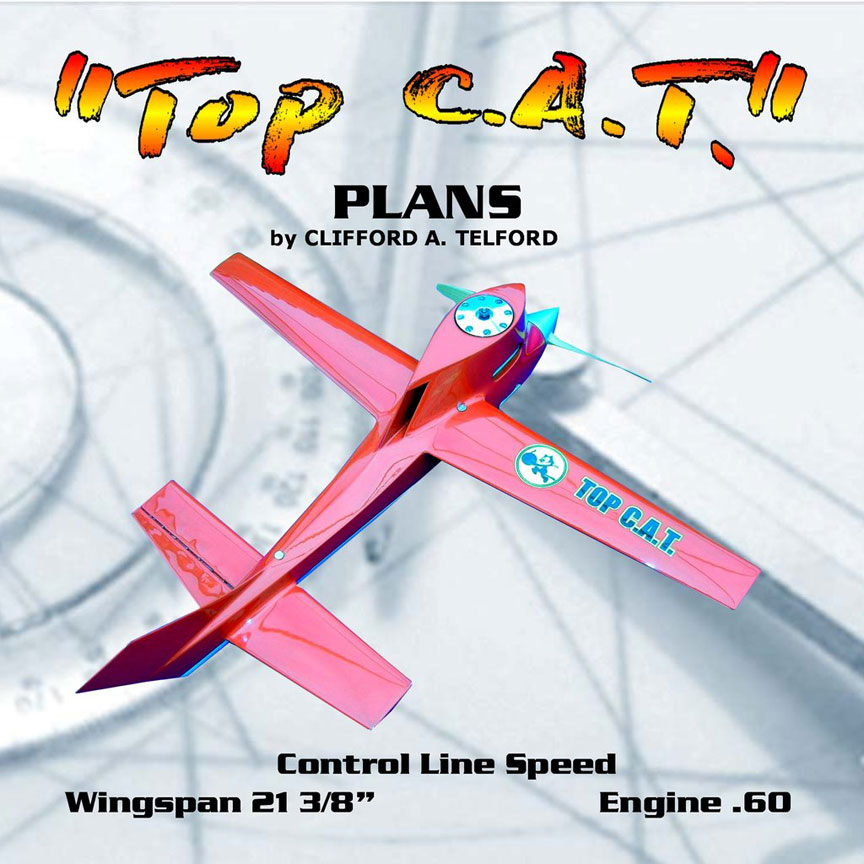A View from Broadway
Top Cat
All apologies to Cliff Telford
By Ken Burdick
June 2020
The top Cat was designed in 1958 by Clifford Telford. One of the prettiest Speed planes built. Steve Helmick introduced me to his when we were pretty young and I never forgot the lines on it.
Fast Forward: Now I’m an old man and sequestered by threat of catching some COVID virus from China. I had pretty well built all my projects and needed something to keep me occupied, so I built a Top Cat from the sketch provided in the December 1991 Flying Lines newsletter. I for one really enjoy carving old Speed ships so this was a perfect project.


Getting the project started. All photos by Ken Burdick.
What’s in the drawer?
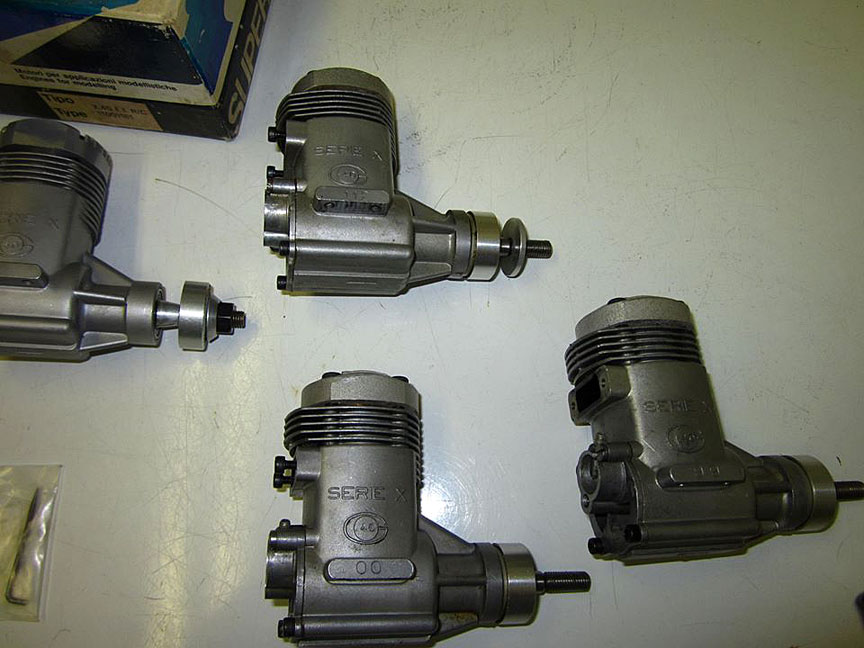
SuperTigre X-40 engines.
Looking through my ever-growing stash of speed engines, I noticed that I have four really nice Super Tiger X-40s. “Perfect,” I thought, and took one out. The one I chose was marked with the TDC on its case so head setup is a snap, I measured it and all looked pretty nice so X-40 it shall be! I fabricated a mini-pipe and internal ring collar so it would fit the ST manifold. Spinner work was from Richard Heart. I decided to make the needle valve and venturi out of an ST 35 after-market that I bought so as to maximize the amount of air into out X-beast.
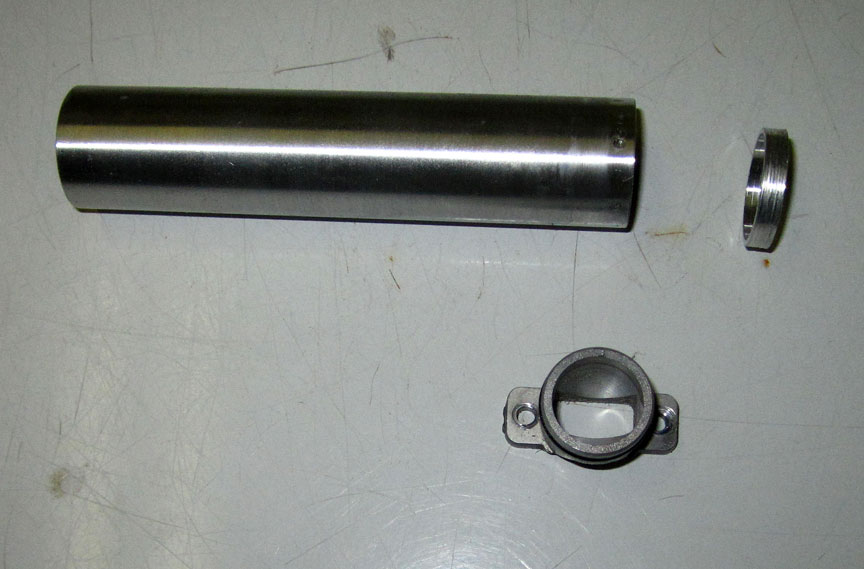
The mini-pipe parts (above) and venturi (below).

Wood pile
Looking over some sketchy plans, I determined that the crutch needed to be ¾” basswood, and I had just one piece left. The thing would have to be narrow compared to the original which sported a McCoy 60. I think the X-40 is about half in weight and breadth, so some liberty was taken on ol' Cliff’s gem. The wing is 3/8” thick as per the original, but is basswood-lined balsa wood; the stab is 3/16" basswood.
Design changes

The original Top Cat and plans.
Some changes were made to match the new skinny version of this vintage ship. For one thing, it's now a rear -exhaust and that threw a wrench right through the cowling. One of the most distinctive features is the swooping lines from the rear of the cowl to the tail; putting a big hole in it for a mini pipe sort of throws that out da window. I was able to match the angle on the cowl, but not the look. Wings and stab were calculated and then eyeballed to proportions needed from a top view.
Where to put the stab? His model has the tail well back of the stab so some eyeballing was again in order. When I had all the rough edges chiseled out, the stone began to take shape.
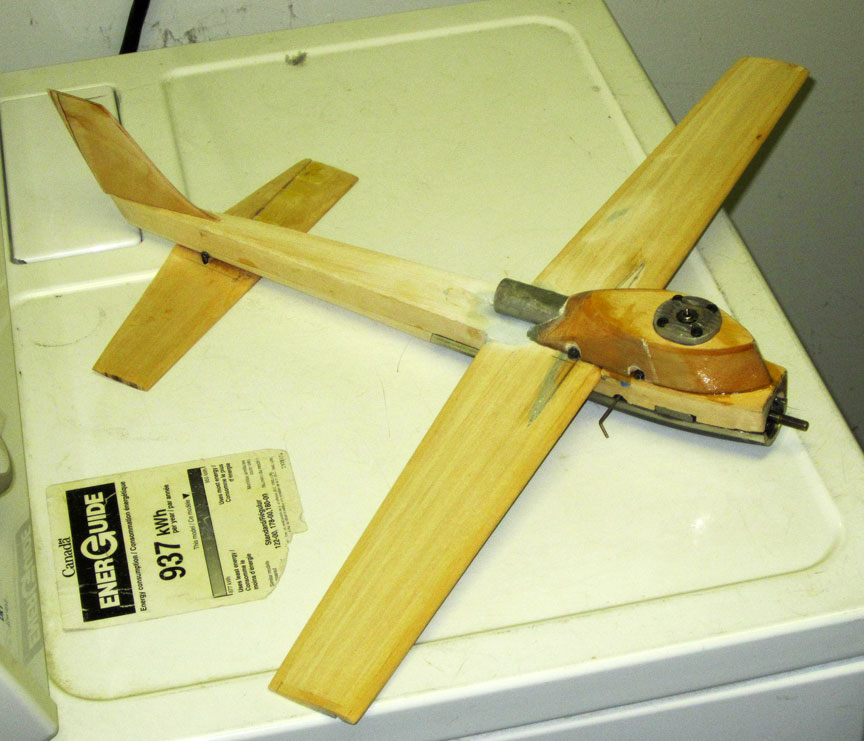
Getting the stabilizer location figured out.
The Big Ugly!
Why go through all the simple stuff, huh? Let’s get to the awful crap. The model was carved, sanded and a reasonable cowing attached. I coated her with several coats of nitrate and covered it old school (silkspan) with more nitrate coats. I have been finishing with Rustoleum and then a top coat of auto clear coat, but have been spending too much time screwing around with wrinkles in the paint from reaction with Rustoleum and the nitrate.
I was reading an old issue of Flying Lines and found that Bruce Duncan had built a speed plane in the 90s and used an epoxy named Enduro. Being in British Columbia makes some of the modeling stuff I took for granted in the U.S. much different. Finding a Canadian-made epoxy finish would save me a lot of freight and fiddling with border issues.
I bought some plain part A and B from Enduro, it arrived in two days! Unheard of in these parts (Kamloops, B.C.). I wasn’t thinking when I bought it and didn’t buy the reducer -- dang! So I tried it without reducing it. The tack coat went on like it should, but the top coat sagged and just didn’t look right. Many days later, I was sanding down the blue goo that had cured to a rock hard finish. Meanwhile I sent for the reducer! The second try was on a stick of bass I had primed -- “looks pretty good!” So I mixed a batch and it snuck in through the basement door and gassed out the house. This paint was quickly becoming a problem. The second coat that was thinned about 40% went on perfectly and looks pretty good, so I’d call it a draw.
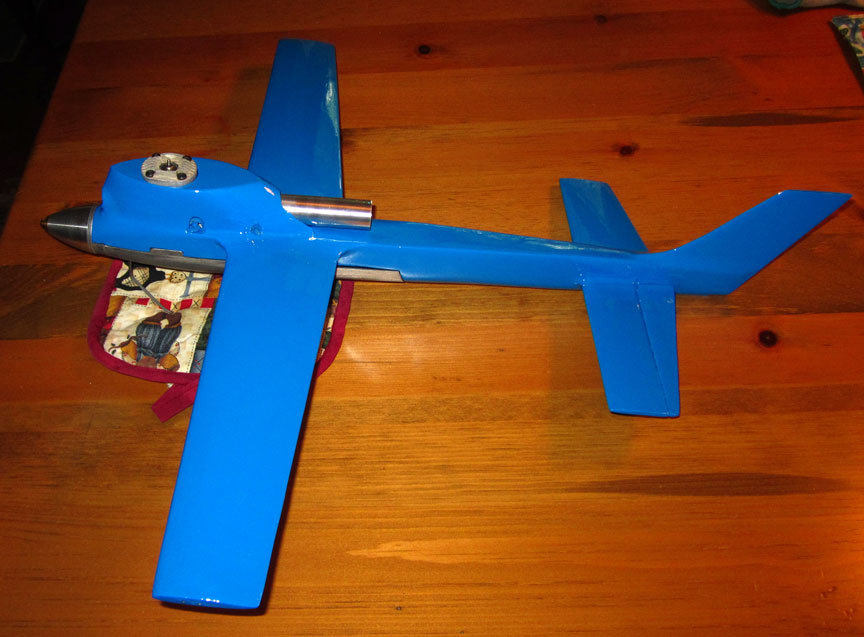
The Top Cat ready to fly.
Future Plans
Too much guesswork, even though it produced a very nice model. I sent away for the AMA plans for the Top Cat. That was several weeks ago and is in keeping with the mail and border shenanigans.
I have already envisioned yet another Top Cat and this one will use a Nelson .40 front intake, side exhaust. The rear of the cowling will be as per plans, with only a giant hole in the front for the intake.
Somehow, they will have to open the border so I can get to my Seattle address and retrieve the engine, but oh well, all things in good time.
-- Kennyb
Back to Bod Busters main page
Back to Speed main page
Flying Lines home page
This page was upated June 11, 2020

